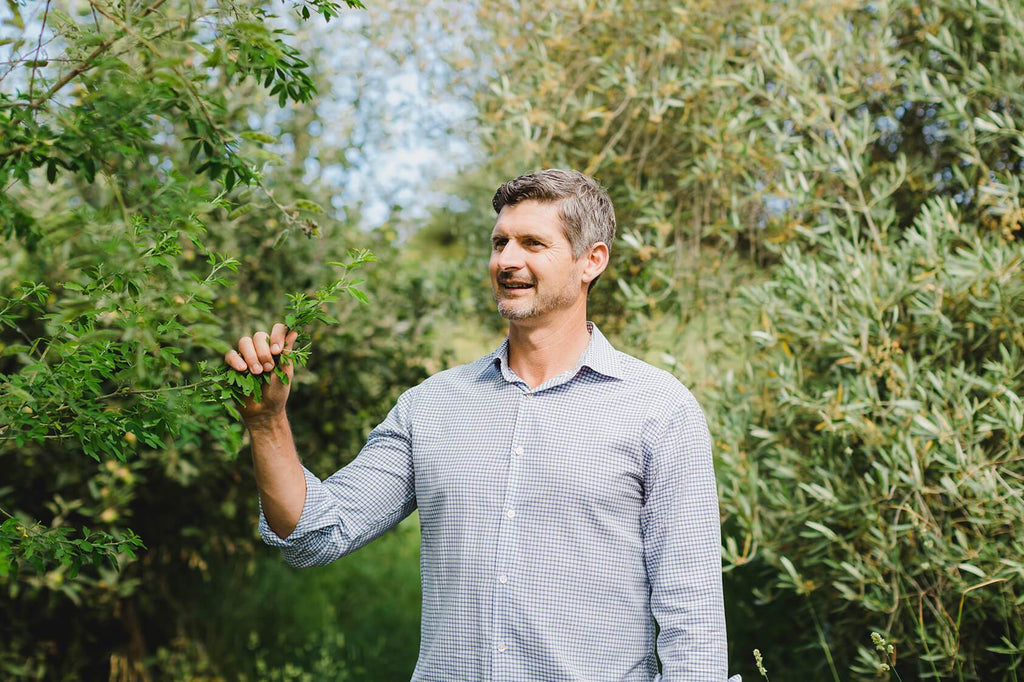

The phenomenon of oxidative stress is essentially when damage is caused by a chemical reaction within the body due to oxidation. Or simply put, imagine rust taking over your body due to oxygen exposure.
"Or simply put, imagine rust taking over your body due to oxygen exposure."
Another example of oxidative stress is when an apple goes brown after being cut in half and exposed to oxygen. This happens because the oxygen is pulling electrons from the apple, causing damage. These particular oxygen molecules are known as oxygen free radicals. So you could think of these oxygen free radicals as scavengers, that steal electrons from your healthy molecules, causing damage to your body.
“Oxygen free radicals are scavengers, stealing electrons from our healthy molecules.”
While producing oxygen free radicals are part of our normal, daily cellular respiration, they can become a problem if the amount produced gets out of control. What makes it difficult is that we can’t see oxidative stress in our body like you can with an apple. And when we have too many oxygen free radicals on the loose with too few antioxidants to stabilise them, this creates an imbalance and leads to further damage.
“While producing oxygen free radicals are part of our normal, daily cellular respiration, they can become a problem if the amount produced gets out of control.”
Our body has a complex system for dealing with normal free radical damage. Antioxidants are essential to this, as they neutralise oxygen free radicals. However, our natural ability to keep our oxygen free radicals and antioxidant production balanced has its limits and requires a lot of nutrition. In particular, we need high amounts of molybdenum (which is a trace mineral) and glutathione to mitigate oxidative stress in the body.
What does it look like when someone has oxidative stress?
1. Early Ageing
The number one sign of oxidative stress is early aging. At a cellular level, oxidative stress causes damage making us look older, quicker. For example a heavy smoker will have a lot of oxidative stress, compared to a non-smoker of the same ages with similar lifestyle factors. The smoker will often have more wrinkles and look aged in comparison.
“At a cellular level, oxidative stress causes damage making us look older, quicker.”
2. Inflammation
Inflammation is the precursor to oxidative stress. So generally people experiencing high inflammation will also have high oxidative stress.
Why do we get oxidative stress?
There are a number of reasons for high oxidative stress in the body, but there are a few key reasons that stand out:
1. Lacking in essential nutrients
When our bodies are lacking in our baseline nutrients, it isn’t able to mitigate normal daily oxidative stress, which allows it to build up.
For example: Molybdenum is a trace mineral that acts as an enzyme cofactor which mitigates and protects against oxidative damage. Glutathione is an extremely strong antioxidant that is produced in the liver and needs sufficient selenium to produce the required amounts.
2. Overactive immune system
Even normal immune function creates collateral damage but if there is any extra immune reaction (think autoimmunity like arthritis, eczema, etc.) that means additional collateral damage which leads on to more oxidative stress.
3. Environmental and lifestyle factors
Extra stress from our environment, from things like harsh UV exposure, pollution, smoking, alcohol, caffeine and sugar, also increases oxidative stress in the body. Our protective mechanisms are put into overdrive from extra stress and unless they have extra support, they won’t cope.
How can we nourish our bodies to support oxidative stress?
1. Support your body’s production of antioxidants
Increasing protein and cruciferous vegetables in your diet will help support the production of antioxidants. Protein is a rich source of molybdenum and also provides you with essential amino acids which are the building blocks for glutathione.
2. Eat foods high in antioxidants
Foods high in natural antioxidants include matcha, blueberries, cacao, artichokes and cranberries. Try this matcha latte recipe for a rich source of antioxidants.
3. Reduce environment toxins
Environmental toxins speed up oxidative stress, these are things such as smoking, drinking alcohol and even exposure to toxic molecules in skincare and bodycare products. The Herb Farm has an incredible protecting skin defence mist that helps to combat oxidative stress we experience from our environment. The Protecting Skin Defend Mist is a light 100% natural mist with powerful ingredients to give invisible protection against the ageing effects of environmental pollutants and stressors.
4. Increase anti-inflammatory foods
Great food sources of foods high in omega 3 fatty acids are oily fish like salmon, nuts and seeds. Have a look at these 6 ways to fight inflammation naturally.
5. Test your oxidative stress levels
While we can’t actively see oxidative stress happening to the body, we can test for it. Now you can know for sure what your oxidative stress levels are by testing with the new BePure Mood, Sleep and Oxidative Stress Test. This test measures your physiological stress or stress coming from with in the body.

Gold standard test to measure normal mood, sleep and oxidative stress levels.
This gold standard test measures for normal levels of your:
- Serotonin, dopamine, epinephrine, norepinephrine, tyrosine and tryptophan
- Melatonin
- Oxidative stress marker (8-Hydroxy-2-deoxyguanosine)
To find out more about the BePure Mood, Sleep and Oxidative Stress Test, chat with one of our BePure Holistic Health Consultants to see if it’s right for you and learn about our personalised approach to diet, lifestyle and nutritional support.
SIGN UP FOR YOUR FREE 15 MINUTE CONSULTATION
The BePure Mood, Sleep and Oxidative Stress Test is available on the BePure Personalised Health Programme or the BePure Comprehensive Personalised Health Programme. On both of these programmes, you are supported by the myHealth platform, where you will have access to your test results.
Want to take the guesswork out of your health?






